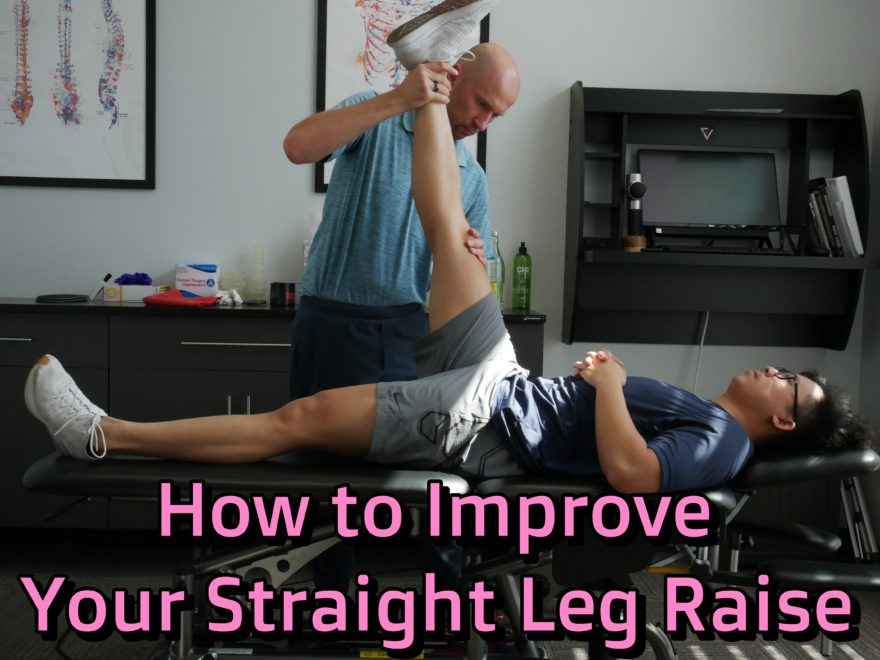Table of Contents
If you can’t touch your toes, you NEED to check this out
The straight leg raise = a big deal for any hinge-type movement, yet it can also be one of the hardest measures to improve.
Or is it?
Understanding the order of attack when you see a limited straight leg raise can make this often difficult to change test WAY more simple.
Don’t worry, Movement Debrief 161 has you covered.
Show notes
How to improve the straight leg raise
Question: I am finding that I can get some nice changes with table tests with the right exercises. The one that seems to change the slowest is the straight leg raise. Any suggestions for how to get some quicker changes with this?
Answer: We first have to ask ourselves why even test the straight leg raise (SLR). So what? Who cares?
I CARE YO.
I care because the straight leg raise is an incredibly versatile test. It really gives you an appreciation for the early-phase external rotation that occurs within hip flexion. Hitting the “normal” amount (70 to 90 degrees) can also provide you some ideas of internal rotation capabilities.
Functionally, the straight leg raise being boss status is useful if you are going to do any type of hinging.
It’s a lot more common for one to cheat their way to a further range with a hip flexion test, as the flexed knee allows for more play.
The SLR is unforgiving.
In fact, if you are having a difficult time getting the SLR to budge, you may not be getting the movement changes you think you are in the lowers.
Think about it, if my straight leg raise is 30 degrees, will our hip rotation testing be accurate at 90 degrees of hip flexion? Probably not. I would argue that because of its ability to pick up limitations, it should be one of the first tests you should look into pushing more, at least until the bias gets more towards internal rotation.
To know what moves would be our best choice, we first have to look at what this test even tell us.
I break the straight leg raise into 3 phases to see where you need to go:
- Phase 1: 0°-45°
- Phase 2: 45°-60°
- Phase 3: 60°-90°
Let’s look at what each phase tells us and how we can improve the range in these regions.
0°-45° hip flexion
Because of the rotational actions involved with hip flexion, external rotation is needed in the earlier ranges of the straight leg raise. Therefore, if you have someone who has a SLR within this range, you need to increase external rotation.
It is quite common that if someone has, as the technical term goes in physical therapy, a HELLA LIMITED SLR, they are likely limited in all movement directions.
If you have manual skills, manual techniques can be quite useful for this type of individual. If you don’t, no sweat big fam! Rolling patterns are an excellent starting point. I’ve found this one to be my go-to as of now:
You want to make sure that your rolling choices are SUPER SLOW, easy, effortless. Do not try, just move.
Once you have gotten your supreme clientele to move with less tension, I’d mess with some type of toe touch progression. This one here is my go-to:
The toe touch will help eccentrically position the posterior lower portion of the pelvis, one of the key areas that needs to let go more than Frozen in this situation.
HOWEVER!
If someone can palm the floor with ease, yet their SLR is limited, I would not push the toe touch. They’ll likely cheat through somewhere else on their body. Doing something that creates a bit more posterior expansion elsewhere might work better, like this move:
45°-60°Hip flexion
This area can be a confusing one, as it’s within this range that the posterior rotators transition from an external rotation to an internal rotation action.
The problem is they are transitioning, yo! How can you tell if you need to bias more external rotation-based strategies or internal?
I’M GLAD YOU ASKED!
As I believe it says in the bible: “Man does not live in SLR testing alone.” Nor can you if you want to know what movement you need to pursue.
Call me Regis Philbin, because I’m going to let you phone 2 friends: hip external and internal rotation!
You’ll likely want to test these two rotations at this point to see where to go. If they present with an external rotation limitation, you’ll likely want more strategies like we discussed in the previous section. You can probably get a bit more aggressive, however, with something like a higher depth squat:
If internal rotation is limited, then we can kick it up a notch with something that can drive a bit more internal rotation, yet I would push it to the limit just yet. You may just want to work on lighter transitions to internal rotation in this area. Something like a table side stride could be money:
Or if you need something a bit more dynamic, I’m likely this lateral squat chop:
60°-90° Hip flexion
Here you need to create more space for internal rotation all…day…every…day. So let’s get nuts, let’s do tasks that push internal rotation. One of my favorites is an offset RDL:
What if my straight leg raise is well beyond 90°?
These are the tough one’s. The floppies. Typically, these peeps are WAY anteriorly tilted. So you need to do things to teach them to shift their weight posteriorly.
AKA – You need ‘em to stack.
A great starting point here is in hooklying:
Sum up
- The straight leg raise can help “catch” severe movement restrictions and is important for hinging activities.
- Early limitations involve improving external rotation
- Late limitations involve improving internal rotation

